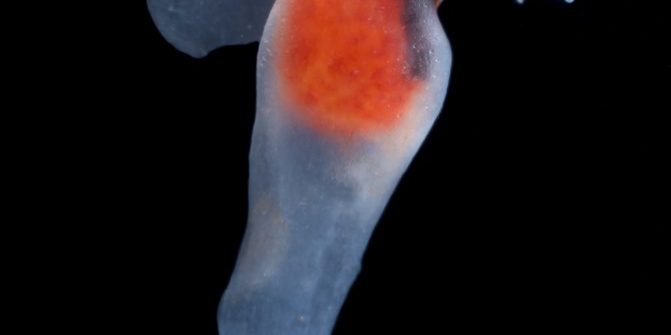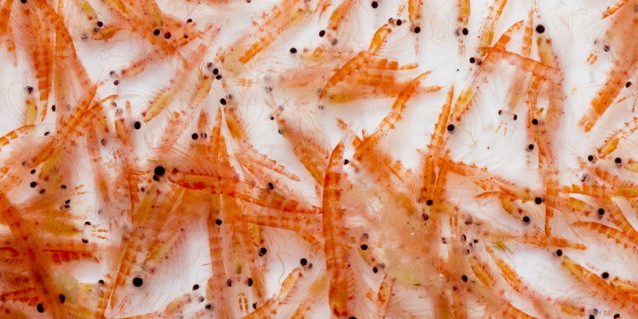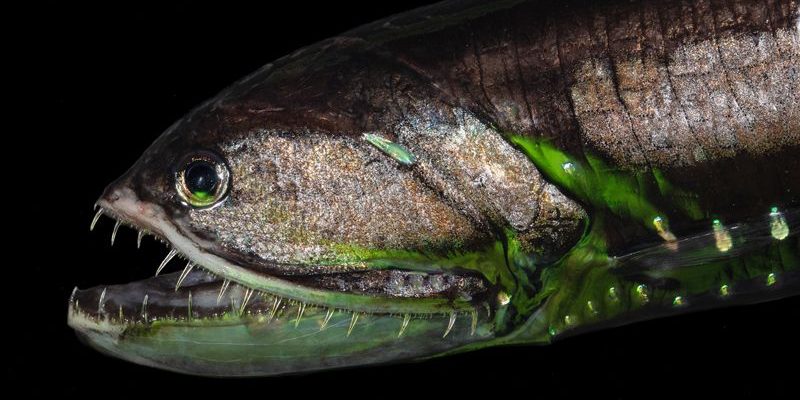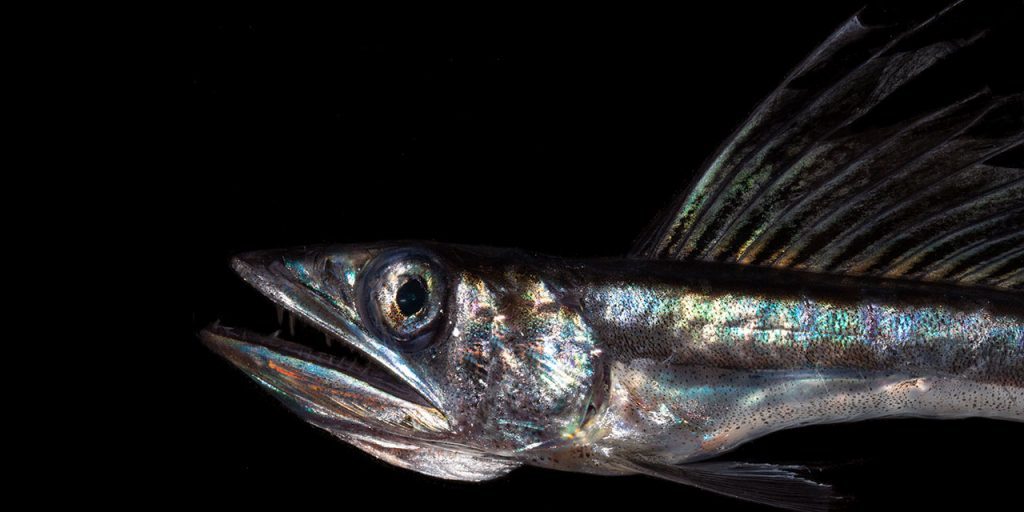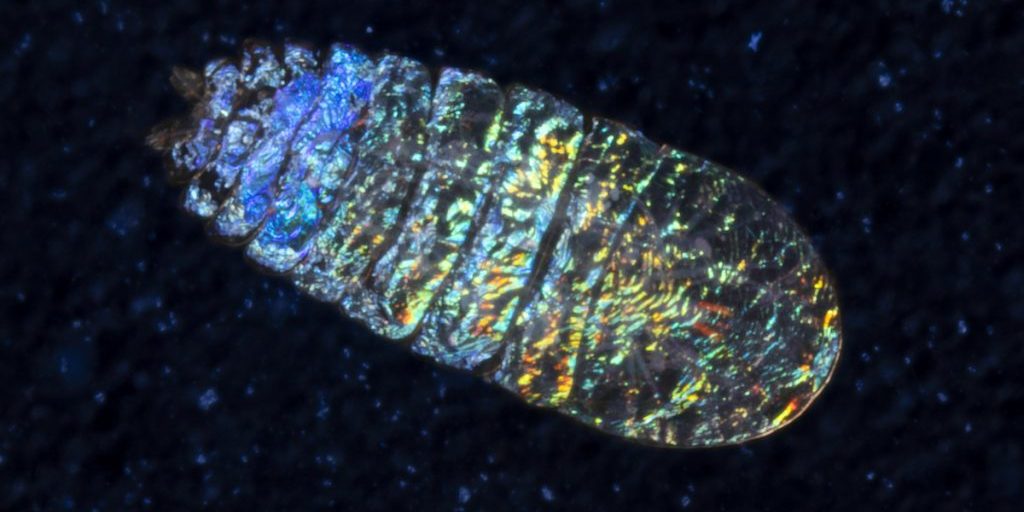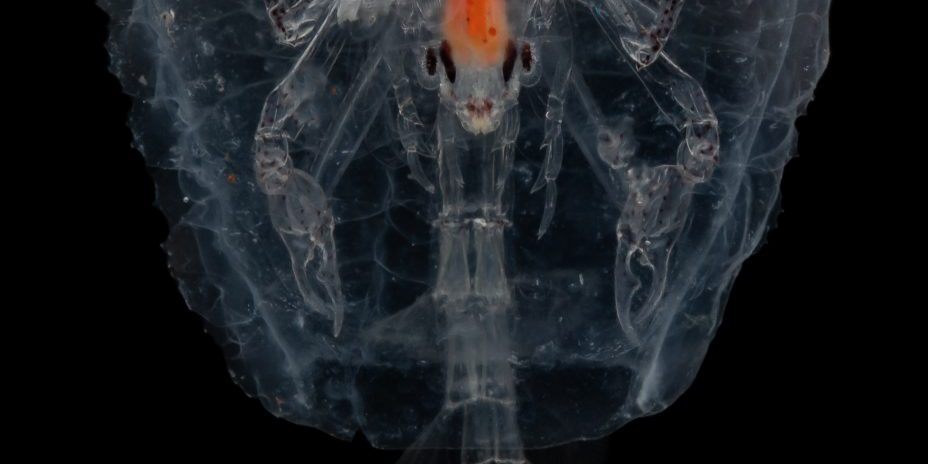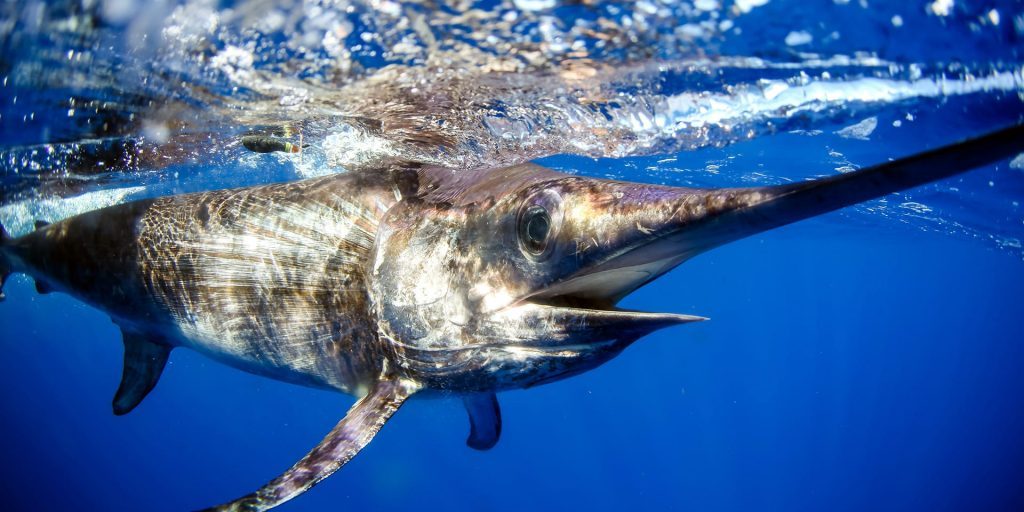About the Anglerfish
If you’re being hunted by the female anglerfish, the last thing you’ll ever see is a flashing blue-green light. Above its gaping mouth and gnashing teeth, the fish sports a glowing lure dangling from a rod on its forehead.
The source of light coming from this bulbous appendage, or “esca,” are bioluminescent bacteria. Although these provide bright flashes that entice prey to come near, they can’t illuminate on their own. In order to glow, the bacteria need some sort of cue from the anglerfish—suggesting a symbiotic relationship between the fish and microbes.
Once prey is within chomping distance, the female fish’s flexible bone structure and expandable stomach make it possible to swallow animals twice its size. In a part of the ocean that’s low on fresh food, it’s a good idea to stock up when you can.
Measuring only about a tenth of a females’ size, diminutive male anglerfish don’t have a fierce reputation. They lack a glowing esca, but are more muscular than females, letting them swim long distances to find a mate.
When anglerfish find the right match, they’re not afraid of commitment—with a single, fateful love bite, males permanently attach themselves to larger females. Monogamy isn’t really a factor in this courtship, however. Over the course of an anglerfish’s lifetime, several males can physically fuse with a female, connecting to her skin and bloodstream and losing their own eyes and organs. Call it love at first glow: these are romantic dreamers, after all.
Quick Facts
| Common Name | Anglerfish |
| Scientific Name | Oneirodes eschrichtii |
| Other Names | Dreamer, bulbous dreamer, cosmopolitan dreamtail |
| Size | up to 29 cm (11 in) for females, 2.8 cm (1 inch) for males |
| Discovery | Lütken, 1871, Named after Danish naturalist D.F. Eschricht |
| Eats what? | Primarily smaller fish |
| Eats how? | flashing lure, large mouth, large teeth |
| Bioluminescence | Yes, one glowing lure dangling from females' foreheads |








